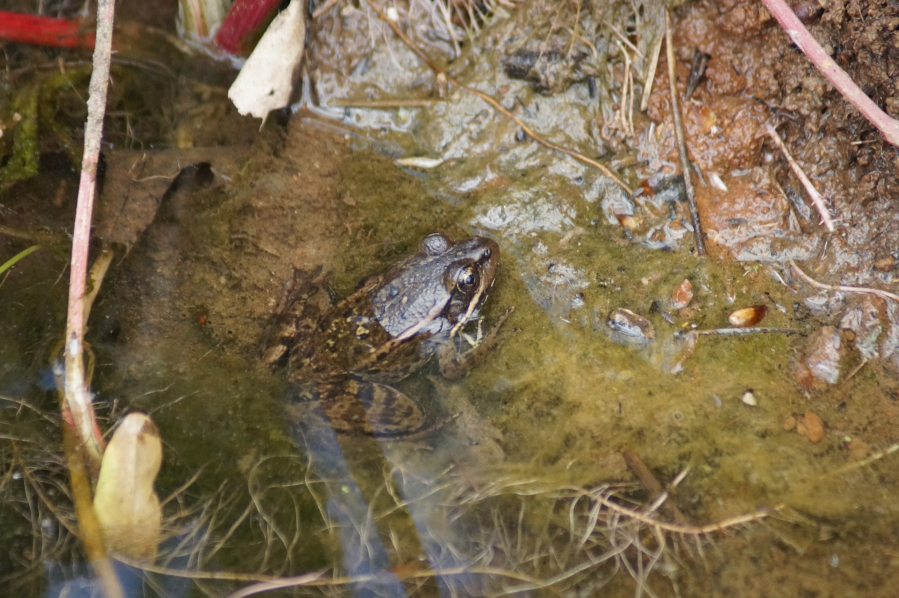Wildlife biologists reported finding a small population of California red-legged frogs within the burn scars of a California wildfire that torched the Sierra foothills last year.
The Mosquito Fire scorched 76,778 acres of wildland east of Foresthill, burning through Tahoe and Eldorado National Forests in Placer and El Dorado counties. The devastating fire, which sparked Sept. 6 destroyed 78 structures and displaced over 11,000 residents within the first two weeks.
“The Mosquito Fire went right through one of the most robust populations of the frog in the Sierra Nevada. It will take time for this area to recover, but the fact that this frog is still here shows the resiliency of wildlife,” said Rick Kuyper, Sacramento Fish and Wildlife Office’s Sierra Cascades Division Supervisor in a media post.
Wildlife biologists recently visited the scarred area of land in late July where they sighted the survival of the native species known as Rana draytonii taking it as a sign of hope for ecology recovery in the burn areas of California’s largest wildfire in 2022.
The Big Gun Conservation Bank in Michigan Bluff “was home to one of the largest populations of red-legged frogs in the Sierra Nevada” before the Mosquito Fire, according to the U.S. Fish & Wildlife Service.
The federal government, including Tahoe National Forest officials, previously collaborated to conserve the threatened frog species and “expand onto nearby national forest lands.” Efforts included the construction of 19 ponds within a mile radius of the conservation bank in 2021 and 2022 to encourage the expansion of the frog species.
The amphibians can grow to as large as 5½ inches in length and are characterized by red undersides, large forelimbs and skin folds on each side that run from their eyes to hips.
When the Mosquito Fire was extinguished 46 days after its initial spark, however, wildlife biologists and conservationists had to wait several months before they could asses the area.
“When we got out to the ponds on the Tahoe National Forest, we could see that the area burned at a very high intensity. Almost every tree and shrub surrounding the ponds was killed, and most of the downed logs were completely consumed. We also saw that the water in the ponds was very cloudy due to the unstable soils left behind from the fire,” said Ian Vogel, senior wildlife biologist with the Service’s Sacramento Fish and Wildlife Office.
Several of the 19 ponds constructed in expansion efforts were damaged into “muddy puddles” in the wake of the fire. A biologist managed to spot a red-legged frog in one of the intact ponds during the initial assessments.
Over time, the remaining constructed ponds in the Tahoe National Forest were seen to be inhabited by the red-legged frog, a sign of the vital impact these ponds have in conservation efforts to preserve this species. The U.S. Fish & Wildlife Service reported that the group of biologists will return to the area in the spring in hopes these same ponds will also become breeding grounds.



